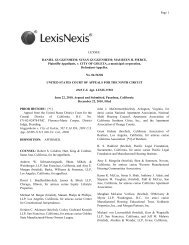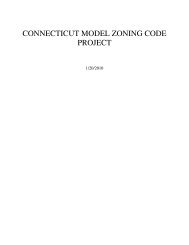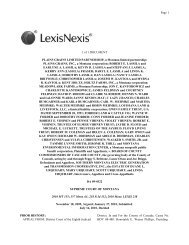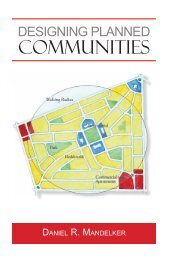Through a Glass Darkly: Measuring Loss Under ... - Land Use Law
Through a Glass Darkly: Measuring Loss Under ... - Land Use Law
Through a Glass Darkly: Measuring Loss Under ... - Land Use Law
You also want an ePaper? Increase the reach of your titles
YUMPU automatically turns print PDFs into web optimized ePapers that Google loves.
616 THE URBAN LAWYER VOL. 39, NO. 3 SUMMER 2007<br />
regulation that restricts land and arguably lowers property values. Thus,<br />
the method of calculation of payment becomes critical to any understanding<br />
of Measure 37. We now turn to the methodology that is most<br />
consistent with the Measure.<br />
VI. Conclusion—The Measure 37 Methodology<br />
The exemption method views only the land at issue and looks only at its<br />
value with and without the regulation. This methodology fails to address<br />
the effects of the regulations on other properties, and how those effects<br />
influence the value of the subject property.<br />
The Hascic and Wu method has much to offer conceptually, but is<br />
expensive and difficult to apply. Moreover, it fails to deal with the complex<br />
interrelationships among regulations for economic analysis<br />
purposes.<br />
The Plantinga/Jaeger method appears to come closest to the needs of<br />
practicality and relative ease of administration. It has the faults that may<br />
be seen as common for any non-economist, in that it does not deal with<br />
the non-economic actor who may deal with land for reasons besides<br />
economics. It assumes a relatively perfect market. It assumes the CPI is<br />
an appropriate multiplier. Finally, it attempts to deal with what is not<br />
known and may not be knowable—the effect of the land use regulation,<br />
in isolation, on the value of land. Even with these criticisms, however,<br />
the Plantinga/Jaeger analysis comes closest to the text and context of<br />
Measure 37 in terms of an easily applied methodology.<br />
The Sercombe method attempts to reconcile the words of the Measure,<br />
to distinguish a cause of action as of the time of the bringing of the<br />
claim and the time when any cause of action that might otherwise<br />
accrue, i.e., at the time of the passage of the restrictive regulation. It<br />
then compounds the difference in value at the time of the passage of the<br />
restriction with an interest rate over the period of the imposition of the<br />
regulation. That compounding has the same difficulty as it does under<br />
the Plantinga/Jaeger method, i.e., it imposes a value on time, which may<br />
not be measurable nor reflect real world values. Unlike the Sercombe<br />
approach, it appears more consistent with the Measure to have the claim<br />
accrue when filed.<br />
Thus, a methodology that looks to the date of the claim as the starting<br />
point, includes the total impact of the land use regulation, both positive<br />
and negative, and uses a rate of interest starting with the date of the<br />
claim, might be a better method of showing “loss” under Measure 37.<br />
Just as a statute must be interpreted in its text and context, so also must<br />
ABA-TUL-07-0701-Sullivan.indd 616<br />
9/18/07 10:43:46 AM



